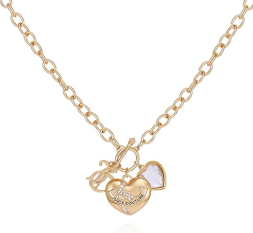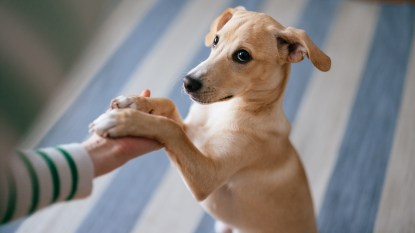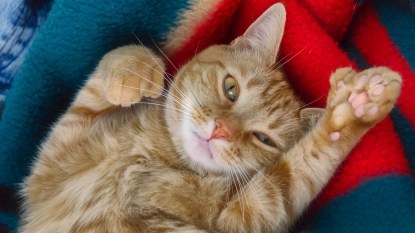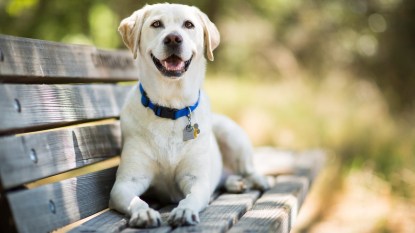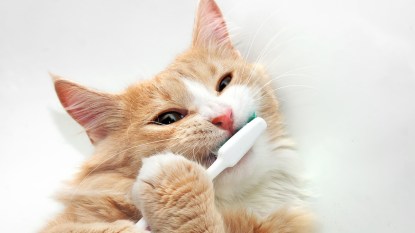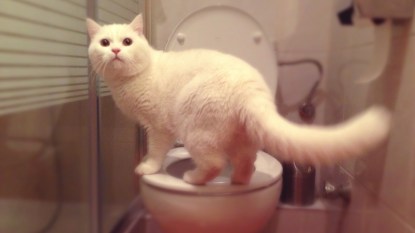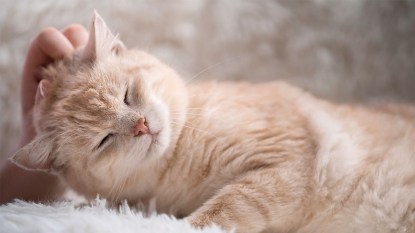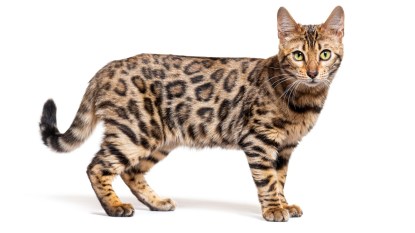The Secret Lives of Little Dogs — What You Should Know as a Small Pet Owner
While they may be small but mighty, pint-size pooches have their own safety concerns to consider.
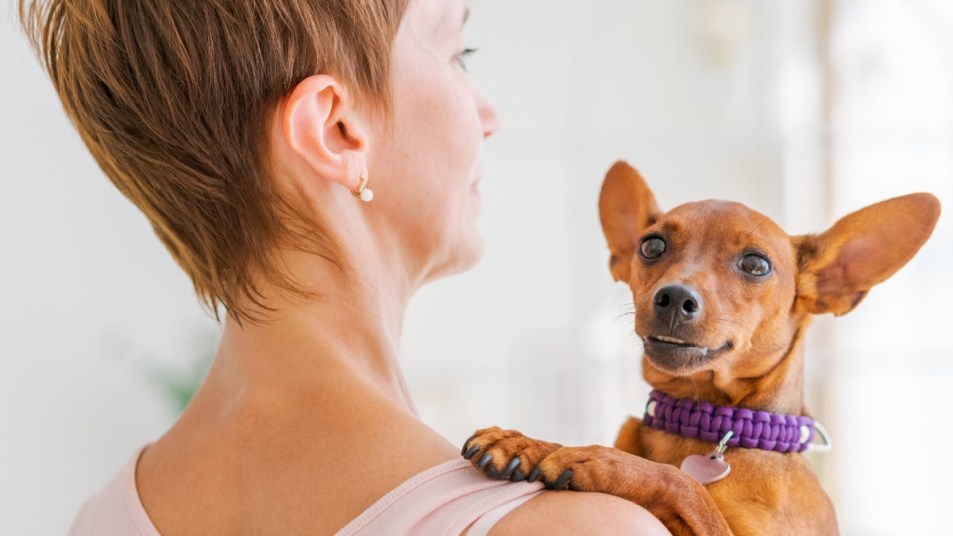
It’s 9 p.m., and my tiny Yorkshire terrier, Buster, is busy letting me know it’s treat time. He may be only 4.5 pounds, but he stands there barking his orders as if he’s a mastiff. He will bark steadily until I do what he wants. But when I call Buster a bully, Colorado-based veterinarian Jo Myers, DVM, says, “not so fast.”
“I think bullying is a word we have to use carefully because of the human psychology that goes into it.” Human bullies, she says, act that way because they don’t feel good about themselves, and the only way to feel better is to put someone else down. Small dogs act assertive because they have a job to do — to get what they want from you. In that sense, their behavior is more boss than bully.
The Duty of Small Dogs
Most dogs have jobs of one sort or another, Dr. Myers explains. But the small dog’s job stands apart from breeds such as the Old English sheepdog, domesticated specifically to herd sheep. Instead, the little dog — which is not a product of evolution but rather bred for human delight — focuses their work life on us.
“These small dogs that have so many amazing traits, and that we love so much,” are literally a breed apart from the “wild, 45-pound dog with upright ears and a medium hair coat,” Dr. Myers says. Those larger dogs were domesticated mainly to perform specific jobs for their human caretakers: herding, hunting, and guarding are among the roles they fill. They are hardwired to work, she adds.
Small dogs, on the other hand, are not usually working breeds who have different jobs to occupy their time and attention. “But they still have all of the emotional capacity, personality, and intelligence to be highly motivated to manipulate your behavior.” In a sense, that’s their job, Dr. Myers explains. They’re hardwired to make sure you behave the way they want you to. “Their level of dedication to that job is the same as the Great Pyrenees with a flock of sheep loose in the mountains.”
Make no mistake: The small dog works hard. And their job is pursuing a lifelong strategy to persist in behavior that controls yours. Buster is a master of the trade.
Pint-Sized Pets, Big Attitudes
We call them small, but the mighty Chihuahua happens to be the mascot of Small Dog Syndrome. “Picture a typical Chihuahua walking down the street with its owner,” says Kayla Fratt, CEO of Journey Dog Training. “If that dog is pulling on the leash, snarling at every dog (and sometimes every person) he sees, and if that same dog has other problem behaviors, chances are you are looking at a dog with so-called ‘Small Dog Syndrome.’”
Small Dog Syndrome is a learned behavior; it is not inherent to small breed dogs. “Those stereotypes exist simply because of the stature of the dog and how it affects their interactions, both with humans and other dogs,” says Myers. While some small dogs may share some of these behaviors, such as barking at other dogs when on a leash, there is a difference between behavior that is fear-based and bad manners that are a learned response.
Small dogs tend to learn bad behavior from humans and fail to learn good behavior from larger dogs, says Dr. Myers. The undesirable behaviors persist because we are more willing to tolerate them in smaller dogs, even in the case of nuisance barking or aggression. It’s not that scary when a small dog threatens to attack. In fact, rather than correcting bad manners, many people think the behavior is cute and may unwittingly reinforce the behavior that gives small dogs a bad rap.
Even fellow canines seem to give small dogs a pass. “Healthy dog social behavior is reliant on feedback that dogs get when they have social encounters with other dogs,” Dr. Myers adds. But when you have a 2-pound micro-mini poodle carrying on like he wants to kill an 85-pound Labrador, the Lab is more likely to ignore the little dog instead of interacting with him the way he would with a peer-sized dog. Dogs will address bad manners from other similar sized dogs with a corrective response. When the small dog is simply ignored, the bad behavior may only intensify.
Small dogs’ propensity for bad behavior is such a common belief that scientists and faculty of veterinary science at the University of Sydney in New South Wales, Australia, launched a project to study the data on height and body weight in relation to 36 behavioral traits of companion dogs using the Canine Behavioral Assessment & Research Questionnaire (C-BARQ). Their rather troubling conclusion?
“Behavior becomes more problematic as height decreases.” They noted that humans may be more tolerant of undesirable behavior among small dogs, while the same behavior in big dogs may be seen as potentially dangerous. Small dogs may be overindulged and overprotected, leaving their bad behavior reinforced.
A spoiled child with no parental boundaries comes to mind. Humans who think that a small dog acting like a tiny tyrant is adorable just end up reinforcing that behavior. So a small dog who is petted when he snarls at a child learns that this aggression begets positive attention. It is we humans, the study suggests, who need to change.
What To Be Concerned About
Small dogs, like small children, need extra protection and special levels of care. People love their tiny pets for their quirky personalities, their babyish appeal, and the easier job of feeding, walking, traveling, and even disposing of their daily business. But however lovable small dogs are, they have some unique genetic and medical issues.
For example, ingesting a toxin is a much bigger problem for small dogs, says Dr. Myers. “It’s the dose that makes the toxin. And so getting into Grandma’s pill organizer for one day may be no big deal for your large dog, but if your dog weighs 5 pounds, it’s a whole different ballgame.”
Another serious concern with small breed dogs is anesthesia. “It’s not so much because of the dose, but because of physics,” notes Dr. Myers. “It’s harder to keep a small patient warm over the time of an anesthetic protocol, and keeping a patient warm is one of the biggest things that affects the [success of an] anesthetic experience.”
The American Animal Hospital Association confirms, “Very small or toy-breed dogs… are at increased risk for anesthetic complications because they are more prone to hypothermia and may be more difficult to intubate and monitor.”
Other small breed problems include dental disease, collapse of the trachea, knee caps dislocating from their socket, breathing problems, and, particularly for dogs shaped like the dachshund, herniated disks. All of this falls under the umbrella of genetics. For example, a tiny dog has the same number of teeth as a large dog but a smaller jaw. Overcrowded mouths often result in gum disease and tooth loss later in life.
Of course, simply being a tiny dog in a large human household can be dangerous. A tiny dog leaping off the bed can break a bone more easily than a golden retriever would. Stepping on a Yorkshire terrier can cause much more damage than treading on a German shepherd. People who live with small dogs, therefore, need to learn to watch where they’re walking.
And while living with a small dog can bring joy and laughter, they can be immensely annoying if humans indulge their bad manners.
“It’s a vast oversimplification,” says Dr. Myers, “but one of my standard phrases when talking to new puppy parents is to remind them that dogs will behave in exactly the manner that’s required of them.” In other words, if you coo at your dog barking for attention, the dog learns that his behavior is effective.
On that note, I have to go. Buster has been barking constantly since I began writing this article. For a tiny dog, he has a surprisingly low tone, but he’s persistent. So please excuse me as I head off to give the little boss his evening treat!
A version of this article appeared in our partner magazine, Inside Your Dog’s Mind, in 2022.

